
Benefits of Relocating to Romania for Latin American Software Engineers
Rinf.tech launches Relocation Program for Latin American software engineers looking for a career change and international experience. Find out the details in this blog post.
Outsourcing entails the selection of an external provider to manage a specific component of an operation or venture. The provider that is deemed ideal should possess excellent qualifications and offer the requisite talent, time, and resources to execute the project and assist the company. Instead of relying on an internal team to develop software applications, a business hires a third party.
Numerous tools and technologies are available to ensure successful outsourcing, including collaboration tools, project management software, version control systems, code review and testing tools, and security and encryption tools.
This guide is designed to provide you with the necessary knowledge and tools to make informed decisions and achieve successful outcomes, whether you’re new to IT outsourcing or looking to improve your existing approach.
Companies often outsource software development when they need more in-house expertise. Other businesses outsource software development services to maximize time and quickly achieve goals. Additionally, numerous firms prefer to outsource to access a pool of professionals who can help them provide the best possible customer service.
Executing an outsourced software development project demands meticulous planning and implementation. This involves defining clear objectives and expectations, establishing efficient communication channels, overseeing progress, ensuring quality control, managing project scope and alterations, wrapping up the project, and transitioning into maintenance mode.
Businesses continue to consider it attractive to outsource software development in 2023 for several reasons.
Companies can outsource and still receive high-quality work from the outsourcing partner while drastically reducing operational expenditures, such as infrastructure, hiring, training, and other expenses.
Companies can co-create products and services tailored to their unique needs and requirements by collaborating closely with an outsourcing partner. Better outcomes and a more effective product development process may arise from this.
Outsourcing nations with abundant skilled personnel, considering the global lack of trained IT experts, might be a cost-effective solution. Additionally, outsourcing enables companies to use cutting-edge technologies that might not be accessible in their home nation, resulting in faster invention and product creation.
The IT industry relies heavily on innovation, but with the rapid rate of evolution in this field, it can be challenging for in-house teams to keep up with the latest technologies and enhance their skills. Software development outsourcing can provide a solution by quickly bringing new and fresh skill sets to the team.
The ability to scale and adapt is essential in today’s business landscape. With outsourcing, you can quickly adjust the composition of your development team by adding or removing members as necessary. This is possible because outsourcing companies have a pool of professionals with diverse skill sets, which makes the scaling process faster and more reliable.
Outsourcing non-essential tasks or projects to a dedicated team frees up your in-house staff to concentrate on core activities. This allows you to optimize resources and achieve business goals more efficiently.

To reduce costs and increase efficiency, businesses increasingly turn to outsourcing, which uses the knowledge of outside service providers. Solution Delivery, Managed Services, Managed Teams, Team Extension, and Squad-based development are five of the most well-liked outsourcing delivery methods.
In Solution Delivery, the vendor has full responsibility for the supply of a service. From gathering and analyzing requirements to design, development, testing, deployment, and maintenance, the vendor offers end-to-end services. Companies that need more resources or knowledge to create and manage complicated software solutions should choose this model.
Another well-liked outsourcing strategy is managed services, which entails the vendor offering ongoing support and upkeep services for a specific system or application. The vendor assumes control of the system or program and monitors, diagnoses, and resolves problems. This strategy is suitable for businesses that wish to concentrate on their core business operations while outsourcing the maintenance of their IT infrastructure.
The vendor assembles an expert team of specialists under the managed team delivery model to work on a particular project or set of tasks. The client controls the project’s priorities and direction, and the vendor oversees hiring, managing, and training the team. This strategy is perfect for businesses needing specific knowledge or abilities for their current personnel.
Another well-liked delivery method is Team Extension, in which the vendor adds resources to the client’s current team. To supplement the client’s team, the vendor offers competent personnel temporarily or permanently, but the client maintains control over the project’s priorities and direction. This strategy is excellent for businesses that need to scale up or address specific talent gaps swiftly.
A more recent delivery approach called squad-based development entails the vendor supplying a committed, cross-functional team to work on a particular project or set of activities. The team is self-managing and is entirely in charge of delivering the project, from requirements collecting to deployment. This approach suits businesses looking to implement agile development methodologies and operate collaboratively, and team based.
There are several widely used delivery models in outsourcing, each with specific benefits and drawbacks. Businesses should carefully consider their unique requirements and ambitions to select the distribution model that best satisfies their demands.
Selecting the best outsourcing provider can be difficult because it requires a thorough assessment of numerous variables to ensure the provider can satisfy the company’s requirements and expectations. When choosing an outsourcing service, keep the following points in mind.
Quality certifications like ISO or CMMI demonstrate a company’s dedication to quality and process excellence. These certifications indicate that a company is more likely to have clear processes and quality control mechanisms, which can lead to better work and shorter project delays.
Delivering services from several locations can be a significant advantage for a provider, allowing for risk diversification, cost savings, and access to difficult-to-find talent. Companies can select the delivery model that best matches their needs from a supplier with a global delivery ecosystem’s selection of services, ranging from onshore to offshore and nearshore.
Your outsourcing provider can provide access to cutting-edge technology, techniques, and best practices with its R&D and Centers of Excellence. This may lead to quicker invention, better productivity, and more effectiveness.
Software providers with specialized business units concentrating on solution categories or domains can amass best practices and domain knowledge to support strong business cases. Companies should consider whether the provider has the required depth and breadth of knowledge and whether their expertise matches their needs.
A provider’s experience with comparable technology, projects, or sectors can be a great benefit, giving the business knowledge of potential problems and solutions. Businesses should assess the provider’s expertise in their sector of the economy or technological field and search for examples of completed, successful projects and client references.
The methodologies a provider uses can significantly impact a project’s quality, effectiveness, and timeliness. Businesses should review the provider’s technique to see if it complements their project management and delivery strategy.
A provider’s talent acquisition strategy may impact the level of skill and availability of resources. Companies should assess the provider’s talent acquisition and retention approach, including training and development programs, to ensure they can offer the required skills and knowledge.
A key element in the success of outsourcing initiatives can be the expertise and level of experience of the provider’s tech leadership team. To make sure they can deliver effective technical leadership and guidance throughout the project lifecycle, businesses should assess the leadership team of the provider’s leadership team’s experience, knowledge, and performance.
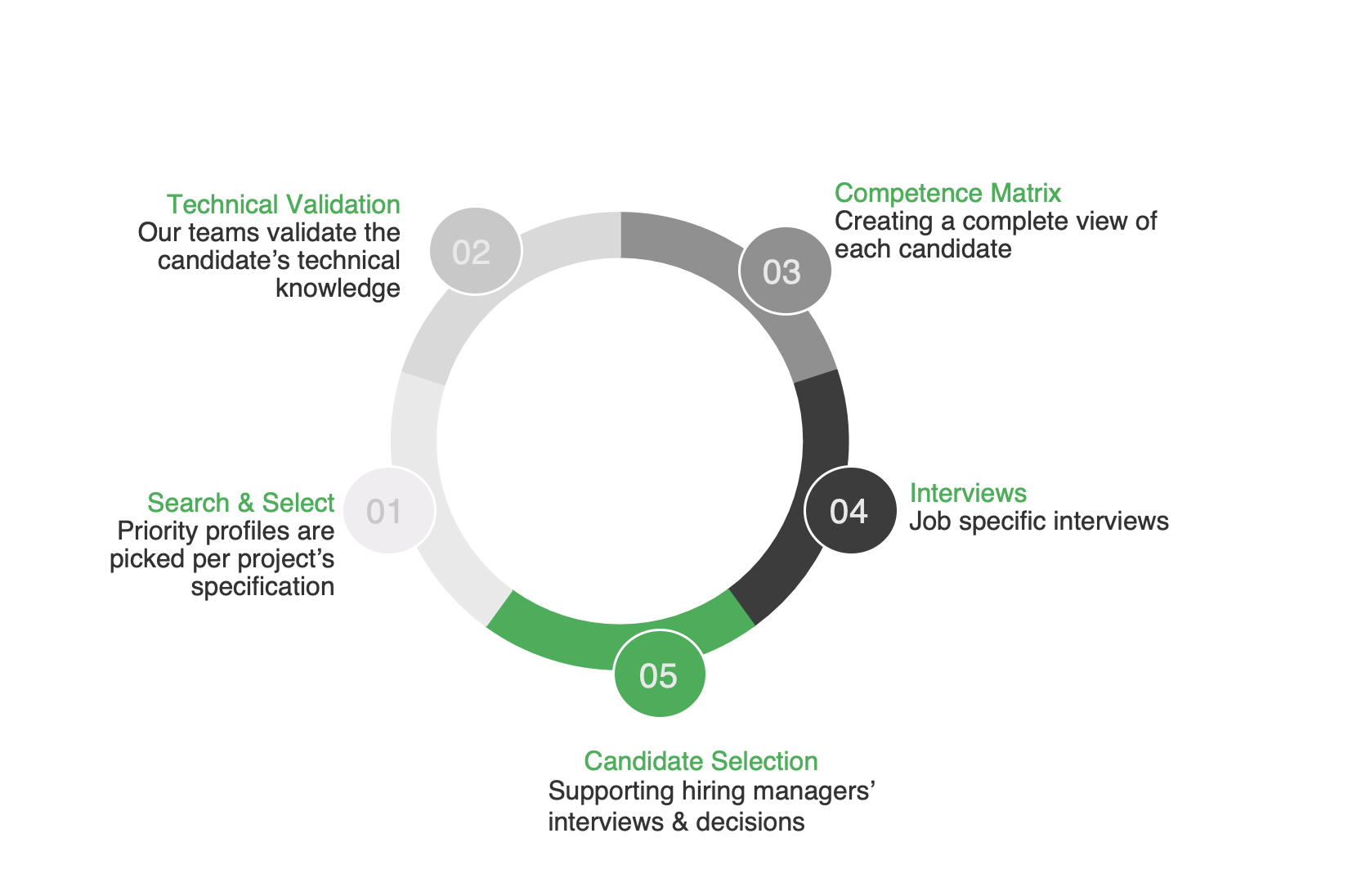
By 2023, it’s expected that the global market for software development outsourcing will continue to expand as more companies try to take advantage of outsourcing’s cost-saving and capacity-building advantages. With a combination of skilled labor, affordable prices, and welcoming business environments, several countries have emerged as popular outsourcing destinations.
In recent years, software development outsourcing has been increasingly popular in Romania. Romania’s IT market value reached €6 billion in 2022, with a population of 19 million and a GDP of $301.14 billion. In the Bloomberg Innovation Index 2022, the nation is ranked 37th out of 60, significantly emphasizing R&D, education, and high-tech businesses.
With 147,000 ITC employees and 8,700 ITC graduates annually, Romania has a sizable pool of technical expertise. Most university graduates also speak English well, making them perfect candidates for IT outsourcing. JavaScript, Java, Python, C#, .NET, C++, C, SQL, PHP, and cybersecurity are some of the most used technologies in Romania.
Romania’s major tech cities are Bucharest, Cluj Napoca, Timisoara, Iasi, Brasov, and Sibiu. Numerous international companies, including Google, Amazon, Samsung, Huawei, and Accenture, have established R&D facilities in Romania. Furthermore, 64% of Romania’s IT firms are financed by outside investors, demonstrating the country’s appeal to overseas investors.
Romania’s upper-middle-income economy is rapidly expanding, and it has been a member of the European Union since 2007. Because of the government’s welcoming policies for international companies, Romania is a fantastic location for software development outsourcing.
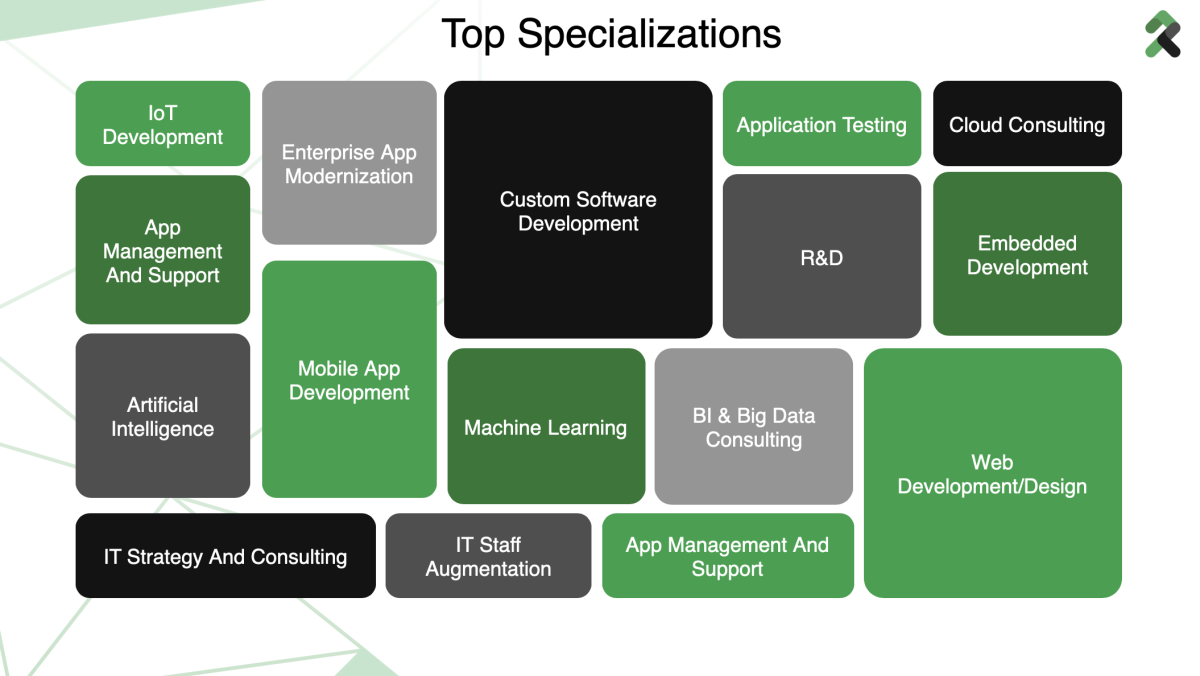
In recent years, Bulgaria has grown in popularity as a location for outsourcing software development. For businesses wishing to outsource their IT services, the nation’s 6.8 million inhabitants, $82.28 billion GDP, and significant-tech hubs like Sofia (which employs 70% of the nation’s IT workforce), Plovdiv, Varna, and Burgas make it a desirable alternative.
Bulgaria scored exceptionally well in R&D and patents, placing 39 out of 60 in the Bloomberg Innovation Index 2022. Additionally, Bulgaria is ranked 35th out of 132 countries in the WIPO Global Invention Index 2022, demonstrating a strong culture of invention and technological growth. These elements, Bulgaria’s €3.3 billion IT market value, and 10,000 ITC firms—70% active in outsourcing—make the country a feasible choice for outsourcing software development services.
Another important aspect of Bulgaria’s appeal as a location for outsourcing is the country’s tech talent market. The ITC sector employs about 100,000 people, 40% of whom work in IT outsourcing, and the nation has a sizable pool of qualified workers. Foreign enterprises can connect and collaborate with local talent more easily thanks to their fluency in foreign languages, including Russian, English, Italian, Spanish, and French, and the 5,000 STEM graduates per year in computer science, automation, and cybersecurity.
Additionally, various major technologies are available in Bulgaria, including Java, PHP, C#, .Net, C, Ruby, iOS, Unity, HTML, and Python, which adds to the country’s appeal as a location for outsourcing. The nation is a trustworthy and stable location for international firms due to its shared legal and regulatory framework as an EU member state.
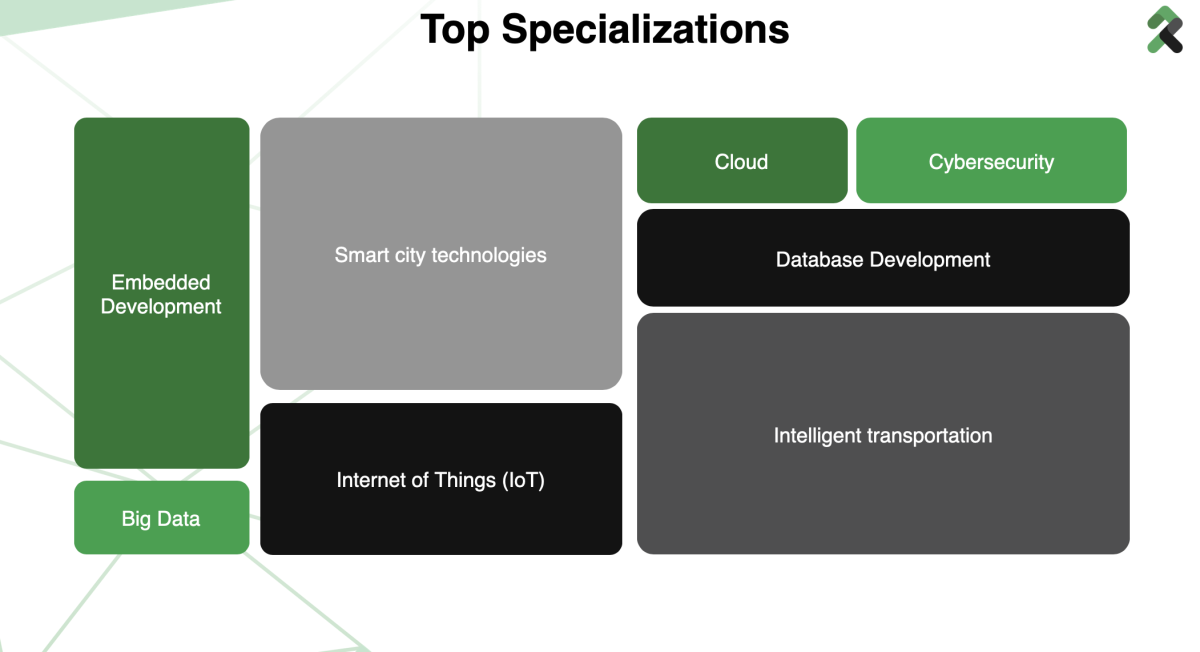
You may be surprised to see Ukraine in this list given the ongoing war in the country. However, last year, Ukraine tech industry demonstrated incredible resilience and is doing surprisingly well this year, according to Deutsche Welle. “Many companies have gone into exile abroad and are using their profits to help finance war efforts back home.
As the war broke out on February 24, 2022, most Ukrainian IT organizations moved all their critical data to secure storage and put in place comprehensive measures to protect their critical operations. rinf.tech, in particular, put together a comprehensive business continuity plan for our Ukrainian employees ready and waiting from the end of 2022.
Many Ukrainian IT leaders expertly figured out how to move their Ukrainian staff to safe locations, and promptly provided housing and financial support to those who were forced to flee their hometowns. All vital technology resources such as documentation, designs, code, etc. have been secured as well. Currently, more than 70% of Ukrainian IT employees work from the relatively peaceful Central and Western regions of the country, and about 16% of tech specialists (mainly female) have moved abroad to their companies’ foreign offices, headquarters or branches.
At first, there were interruptions and delays. Some cities were razed to the ground by Russian artillery, and petrified people fled west in disorder, but the panic did not last long before the Ukrainians stubbornly retreated. And since remote work has already become the norm for most software developers during the pandemic, numerous IT engineers have found ways to keep working despite the challenges.
It’s hard to believe, but the Ukrainian tech sector hit a record $2 billion in the first quarter of 2022, up 25% year-over-year, despite the country weathering full-blown Russian aggression.
Yet, the Ukrainian tech industry pushed even harder to make its contribution to the country’s economy. In November 2022, the Better Regulation Delivery Office reported on the dynamics of business development in the Ukrainian IT sector over the past five years. The industry accounted for 13% of the country’s total exports, which amounted to $7.6 billion.
According to TechUkraine, the IT sector has retained 96% of its service exports. As many as 77% of Ukraine-based companies acquired new customers during the war.
Overall, international companies have been incredibly supportive of their Ukrainian tech partners by showing faith and staying with them.
Of large Ukrainian tech companies, just 1% reported losing contracts due to war.
Firms with between 200 and 1,200 professionals were able to keep 90% of their contracts, while smaller companies managed to keep 88%.
Ukraine has become a well-known location for software development outsourcing. Ukraine, which has a 44-million population, has the second-largest market for STEM skills in Central and Eastern Europe.
The country has many essential tech hubs, including Kyiv, Odesa, Dnipro, Lviv, Kharkiv, and Vinnytsia, with a combined workforce of over 300,000. Ukraine offers a consistent supply of highly skilled software engineers concentrating on Computer Science, Automation, and Cybersecurity, with 17,000 graduates in STEM subjects per year.
With 50% of Ukrainian software developers speaking English at an upper-intermediate level or higher, Ukrainian teams are simple for businesses. International companies like Microsoft, Huawei, Siemens, Oracle, and Skype all operate fulfillment facilities in Ukraine, proving the nation’s attractiveness.
With access to cutting-edge technologies and equipment, Ukraine has a well-developed IT infrastructure with high-speed internet connectivity. According to SkillValue, Ukraine is the eighth-best country in the world for having highly skilled programmers, with an average score index of 91.26%. It is also simpler for businesses to collaborate with Ukrainian teams because Ukraine and many Western European nations have comparable cultural backgrounds.
Thanks to its expanding startup ecosystem, Ukraine is generating cutting-edge new businesses and technologies. It is hardly surprising that over 90% of IT companies intend to keep investing in Ukraine and that 43.1% anticipate commercial growth this year. Overall, it is expected that Ukraine will continue to prosper as a location for software development outsourcing.
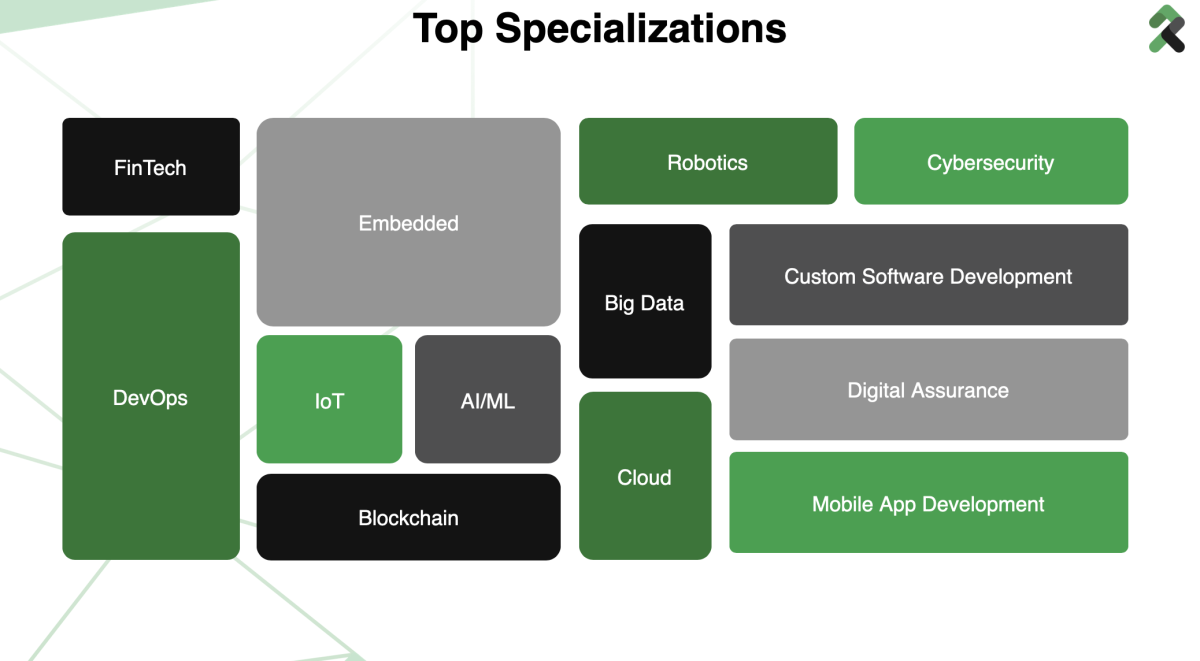
In recent years, Türkiye has become a desirable location for outsourcing software development. With an 87 million-strong population and the third-largest labor force in Europe, the nation boasts a sizable and highly skilled workforce. With increasing firms concentrating on fintech, e-commerce, and healthcare, Türkiye has a thriving startup ecosystem.
Türkiye has a highly skilled workforce in the ICT industry, with an emphasis on software development, artificial intelligence, and cybersecurity. The nation also boasts a sizable pool of STEM graduates, with 209 universities producing 98,000 of them each year. Türkiye receives a 6.9/10 on the availability of qualified software developers, outperforming comparable Eastern European nations like Poland, Bulgaria, and Romania.
Türkiye is a hot spot for businesses looking to develop a presence in Europe and Asia due to its advantageous location between the two continents. Turkish technologists can choose from a wide variety of commercial and cultural opportunities. The nation has also implemented several programs to help the technology sector’s growth, including tax incentives, funding for technology parks and research facilities, and steps to cut down on red tape and bureaucracy.
The predicted value of the Turkish IT market is $30 billion in 2022, with $17.5 billion in IT exports, a 58% increase from 2020. Global companies with substantial operations in Turkey include Microsoft, Huawei, Coca-Cola, Ford Automotive, Hyundai, Pfizer, Unilever, Toyota, Oracle, SAP, and Google. Moreover, the nation employs over 71,800 people across 1,600 software development firms and 1,200 R&D facilities.
Türkiye is the perfect site for businesses seeking a foothold because these R&D centers can benefit from sizable incentives.
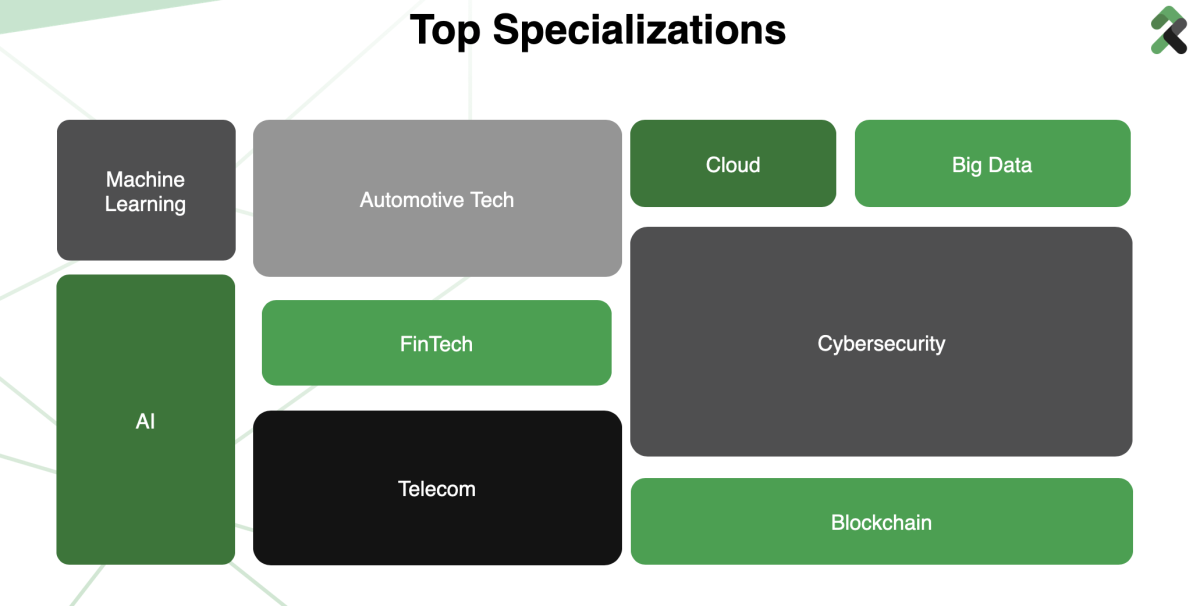
Software development outsourcing is becoming more and more common in Mexico. With a GDP of $1304 billion and a population of over 133 million, Mexico presents a sizable and vibrant market with significant growth potential. The tech talent market in Mexico’s major tech hubs, including Mexico City, Guadalajara, and Monterrey, is thriving and expanding quickly.
The nation’s high rating on the Bloomberg Innovation Index 2022 strengthens its position as a top outsourcing destination. Mexico performed exceptionally well in R&D, education, high-tech enterprises, and patents, scoring 58 out of 60 overall. This demonstrates how strongly the nation is committed to innovation and technology.
Over 700,000 people are employed in the ITC industry in Mexico, and 130,000 graduate in essential technologies, including embedded systems, CSS, Java, JavaScript, Python, C, C++, PHP, and .Net each year. Many Mexican workers can communicate with clients from the United States and other English-speaking nations because they are fluent in Spanish and English.
Many international companies with fulfillment centers are based in Mexico, including Huawei, Oracle, Honeywell, Walmart, IBM, Spotify, Lyft, Stripe, and AWS. These businesses are drawn to Mexico because of its strategic location, affordable costs, young, skilled population, and political and economic stability.
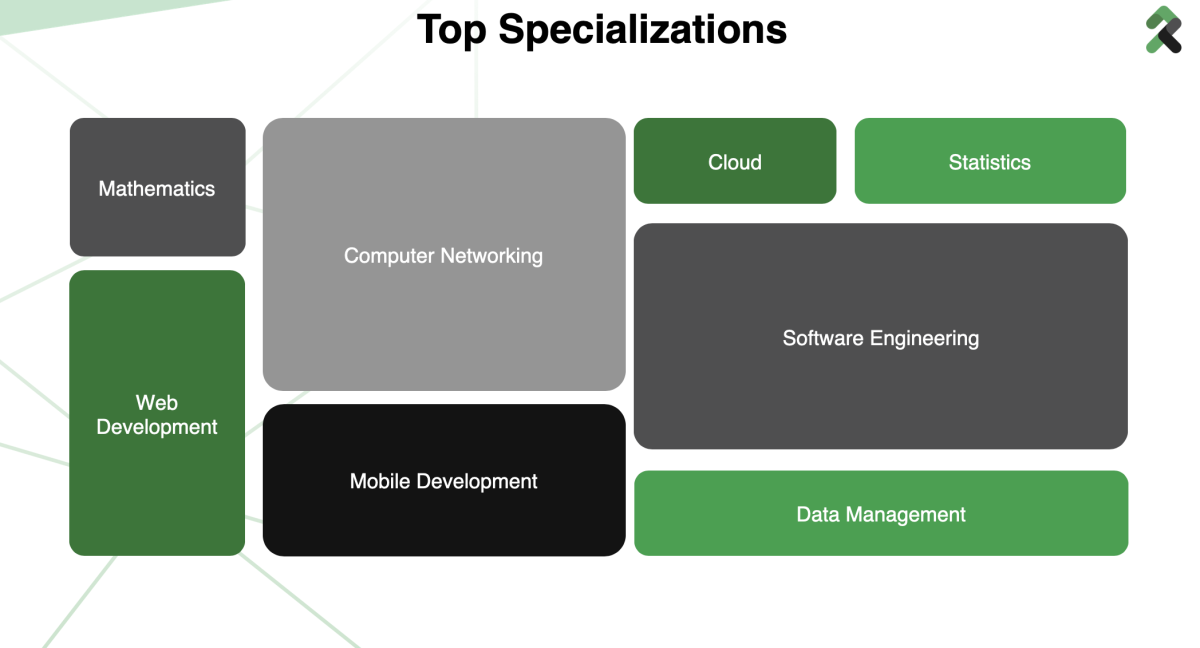
In conclusion, IT outsourcing has become an increasingly popular option for companies looking to expand their in-house expertise, reduce costs, and quickly achieve their goals. With the global IT services outsourcing market projected to grow significantly in the coming years, it is essential for businesses to understand the different delivery models, factors to consider when choosing a provider, and available tools and technologies to ensure successful outsourcing. By carefully evaluating their unique requirements and selecting the right outsourcing model and provider, businesses can access a pool of qualified talent, co-create innovative solutions, and focus more on their core business goals. However, outsourcing also demands meticulous planning, effective communication, and quality control to achieve successful outcomes. With the information and tools provided in this guide, businesses can make informed decisions and achieve successful outcomes with their outsourcing initiatives.
The global market for software development outsourcing is expected to continue to expand in 2023, with several countries emerging as popular destinations. Romania, Bulgaria, Ukraine. Türkiye, and Mexico offer a combination of skilled labor, affordable prices, welcoming business environments, and a thriving startup ecosystem, making them attractive options for companies seeking to take advantage of outsourcing’s cost-saving and capacity-building advantages. Each of these countries has a pool of highly qualified and diversified talent, with fluency in foreign languages, offering excellent communication and collaboration with clients from all over the world. With their focus on innovation, technology, and strong work ethics, these countries are poised to continue growing and prospering as leading outsourcing destinations in the coming years.

Rinf.tech launches Relocation Program for Latin American software engineers looking for a career change and international experience. Find out the details in this blog post.
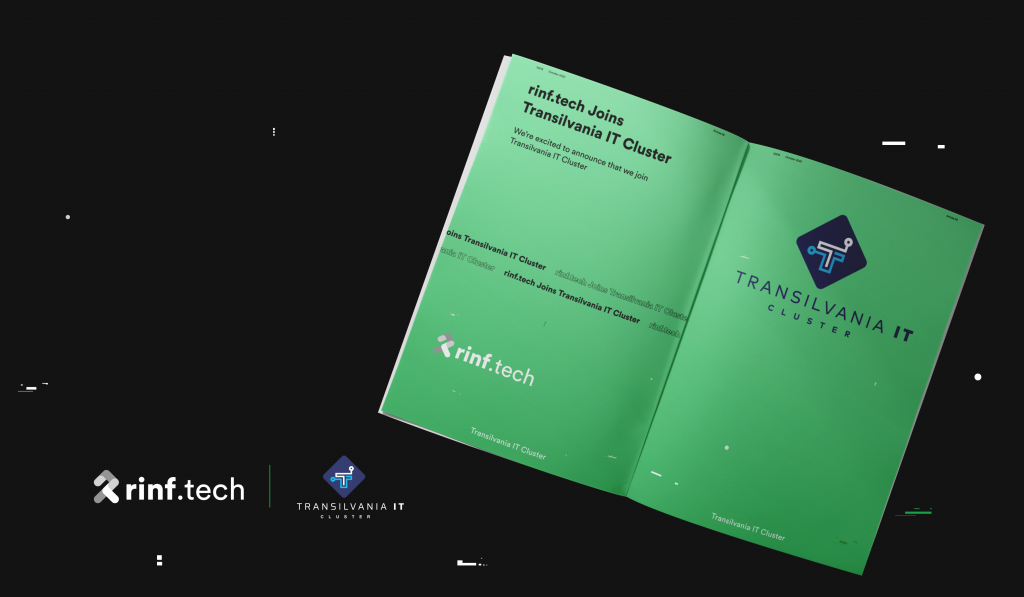
rinf.tech becomes a member of Transilvania IT Cluster in Cluj.

We’re excited to have been recognized as the Best Custom Software Development and R&D Solutions Provider in Romania by the Acquisition International Magazine.
Copyright © 2023 rinf.tech. All Rights Reserved.
Terms & Conditions. Cookie Policy. Privacy Policy.
Politica Avertizari de Integritate (RO)